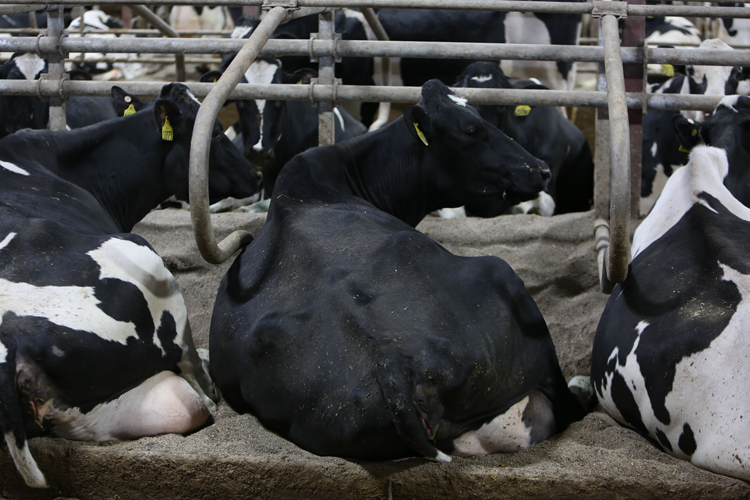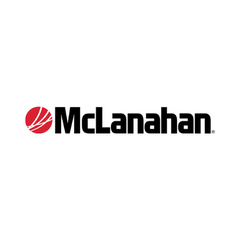
Cow comfort and herd health are essential for maximizing milk quality and production. Bedding plays a critical role in both, and for many dairy farms, sand remains the preferred choice. However, the question remains: is fresh sand or recycled sand the better option?
You have options. The key is to trust your bedding, whether it’s new or recycled. It needs to work for your cows, their health, and, ultimately milk quality. When it comes to fresh sand versus recycled sand, research shows that properly processed recycled sand offers the same benefits with added cost savings and sustainability.
Benefits of recycled sand
Despite concerns about cleanliness, consistency, and bacteria, properly recycled sand is equal, if not better in some cases, at providing the same benefits sand bedding is known to provide, including:
- Cow comfort: Properly processed recycled sand retains the same makeup and form as fresh sand. Proper processing removes rough debris and excessive fines, ensuring comfort is based on cleanliness and particle size, not whether the sand is new.
- Bacteria growth: Studies show that when properly processed, recycled sand has no significant difference in bacterial counts to new sand over the week after bedding the stalls.1
- Moisture and organic matter: The ideal bedding moisture range is 4-5%. Both new and recycled sand, when properly processed, typically fall within this range. Additionally, recycled sand may have lower organic material levels than some newly sourced sand.
- Bedding cost: Continuously purchasing new sand is expensive due to material and transportation costs. Sand recycling systems often recover 90% or more of sand from manure, with the remainder lost as fine particles. Studies indicate switching to recycled sand can reduce bedding costs by up to $0.30 per hundredweight of milk produced.2,3
For many dairy farms, recycled sand bedding offers a sustainable way to retain sand’s benefits while cutting costs and easing manure management, without reducing cow health.
Farmers assume new sand is the better option, but it can come with challenges. Quality, organic matter levels and particle size vary by source. To ensure consistency, routine testing for organic content, moisture levels and material composition is essential. New sand can contain silts, clays and plant debris.
High-quality sand, whether new or recycled, should include a mix of fine and coarse particle size, minimal gravel, clay or silt and proper traction and cushion to keep cows comfortable.
It’s all in how you manage it
What matters most is sand quality, and research continues to show that recycled sand provides the same quality as new. Whether you are bedding with new or recycled sand comes down to the economics and logistics of your farm.

Regardless of origin, proper stall management is key: keeping stalls dry, removing organic matter and ensuring clean, deep bedding for cow comfort.
With McLanahan’s advanced sand recycling systems, dairy farms can reduce sand bedding costs, improve consistency, and lower environmental impact while also maintaining high herd health standards.
To learn more about sand bedding and sand separation, visit mclanahan.com/solutions/dairy.
About McLanahan
Headquartered in Hollidaysburg, Pa., USA, McLanahan Corporation offers over 185 years of experience in providing processing solutions to a variety of materials handling industries. Today, McLanahan’s operation includes offices in Asia, Australia and Asia Pacific, Europe, Latin America, MENA and North America, and it is supported by a strong network of dealers and partners around the world. For more information, contact sales@mclanahan.com.

1 Kristula, M. A., et al. (2005). Comparison of bacteria populations in clean and recycled sand used for bedding in dairy facilities. Journal of Dairy Science, 88(12), 4317–4325
2 Harrison, E. Z., Bonhotal, J., & Schwarz, M. (2008). Using manure solids as bedding. Cornell Waste Management Institute. Retrieved from https://ecommons.cornell.edu/bitstream/handle/1813/44571/beddingfinalreport.pdf.pdf?sequence=2
3 Gooch, C. A., Wedel, A., & Inglis, S. F. (2005). Manure application cost study. Cornell University. Retrieved from https://ecommons.cornell.edu/bitstreams/f62df2b0-5fe3-45ba-bff3-761e3ec6f5c8/download


